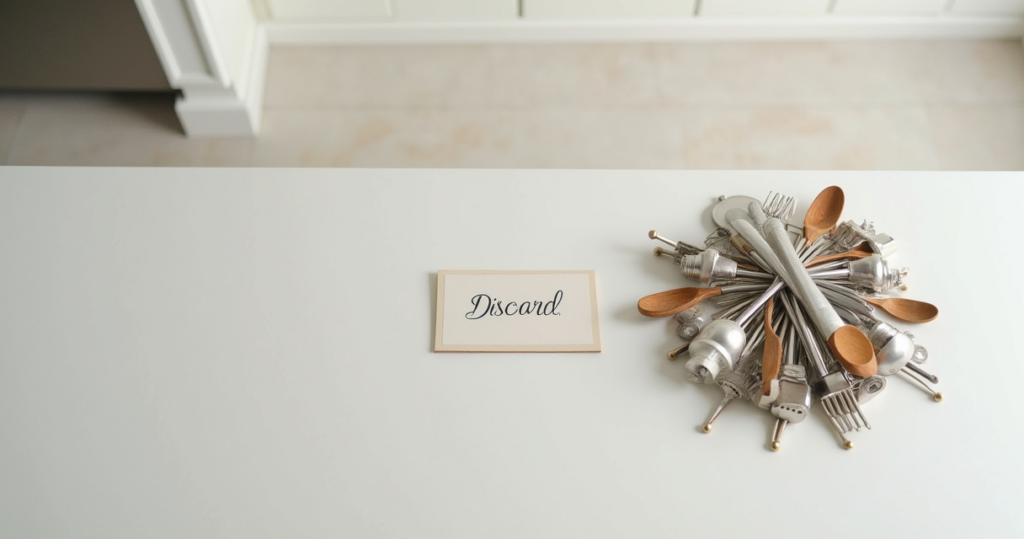I’ve noticed something about kitchens lately. Whether I’m in my ciocia’s small apartment in Warsaw, where the air is thick with the scent of simmering kapusta, or my cousin’s high-rise in Shanghai, surrounded by the sizzle of garlic and ginger, the principle is the same. A kitchen isn’t just a room; it’s the center of the family story. And a well-organized kitchen isn’t about minimalist perfection or having identical containers from an expensive store. It’s about flow, respect for ingredients, and making space for life to happen.
Everyone tells you to buy more bins, more dividers, more stuff to get organized. That’s the noise. What actually matters is understanding how you live, what traditions you carry, and creating a system that honors that. The real secret is that organization is a form of respect—for your time, for your ingredients, and for the people you share your food with. I learned this the hard way, trying to force a generic “perfect” pantry system on a kitchen that needed to hold both big jars for Polish pickles and a dedicated drawer for Chinese cleavers and steamers. It was a disaster.
So let’s call out the BS. You don’t need a bigger kitchen, you just need a smarter one. A kitchen that reflects you. These are the shortcuts and truths I wish I’d known earlier, blending the resourcefulness of my Polish Babcia with the quiet efficiency of my Chinese Wai Po to help you create a space that feels like home.
Kickstart Your Organization with Smart Planning and Decluttering (Part 1)
Before you buy a single beautiful container, we need to do the foundational work. This is the part most people skip, but it’s the most critical. It’s about listening to your space and being honest about how you use it. Think of this as the thoughtful conversation you have with your home before you start moving the furniture around.
1. Master the ‘One Year Rule’ to Declutter Cabinets Ruthlessly
My Babcia had a saying that loosely translates to, “Don’t let idle things steal space from working things.” That’s the heart of the one-year rule. Look at that odd-shaped pan, the specialty gadget you bought for one recipe, the inherited platter that’s too precious to use. If you haven’t touched it in a full cycle of seasons, it’s time to ask a hard question: is it serving your life now, or is it just holding onto a life you thought you’d have?
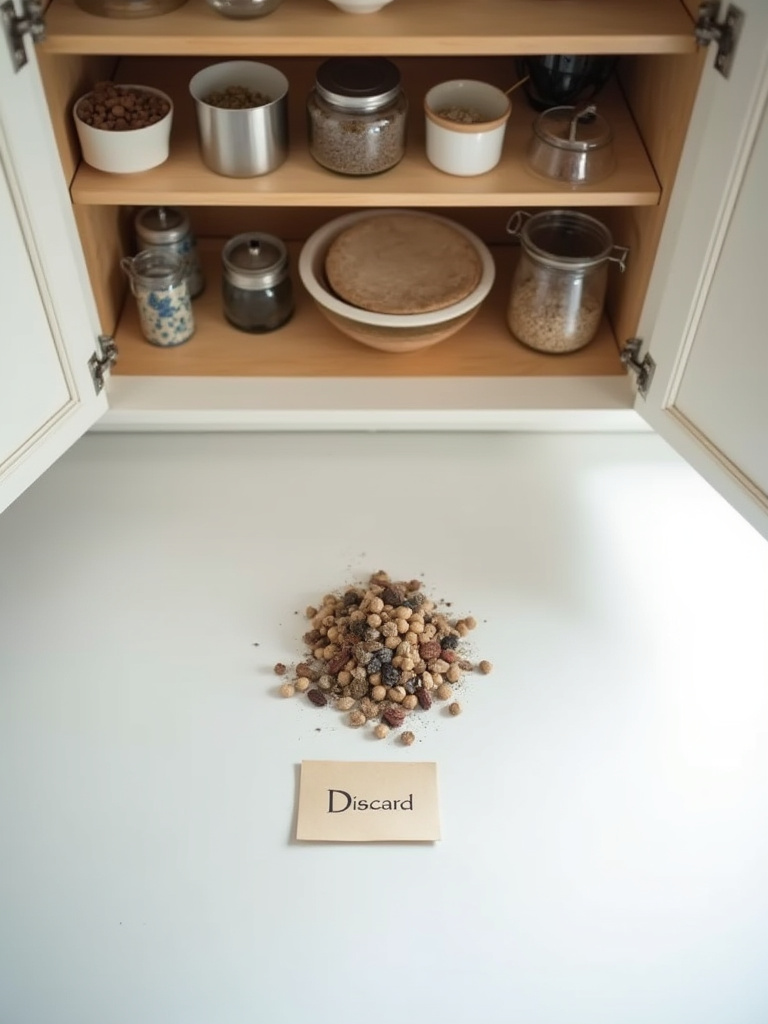
Letting go allows you to make room for what you truly need. This isn’t about wastefulness; it’s about practicality. An item collecting dust in your cabinet could be a treasure for someone else. Thank it for its purpose, and then let it go. Your reward is clarity, space, and the quiet joy of only being surrounded by tools that actively support you.
This simple act of curating your tools paves the way for a more intuitive kitchen. Now that we’ve cleared some space, the next step is to get a true picture of what remains.
2. Conduct a Full Kitchen Inventory to Understand Your Usage Patterns
You can’t create a functional map without knowing the territory. An inventory sounds tedious, I know, but think of it as a respectful greeting to everything you own. It’s the moment you stop guessing and start knowing. Empty one cabinet, one shelf, one drawer at a time. Group things together: all the spices, all the grains, all the oils. Suddenly, you’ll see the three half-empty bottles of soy sauce and the five tins of paprika.
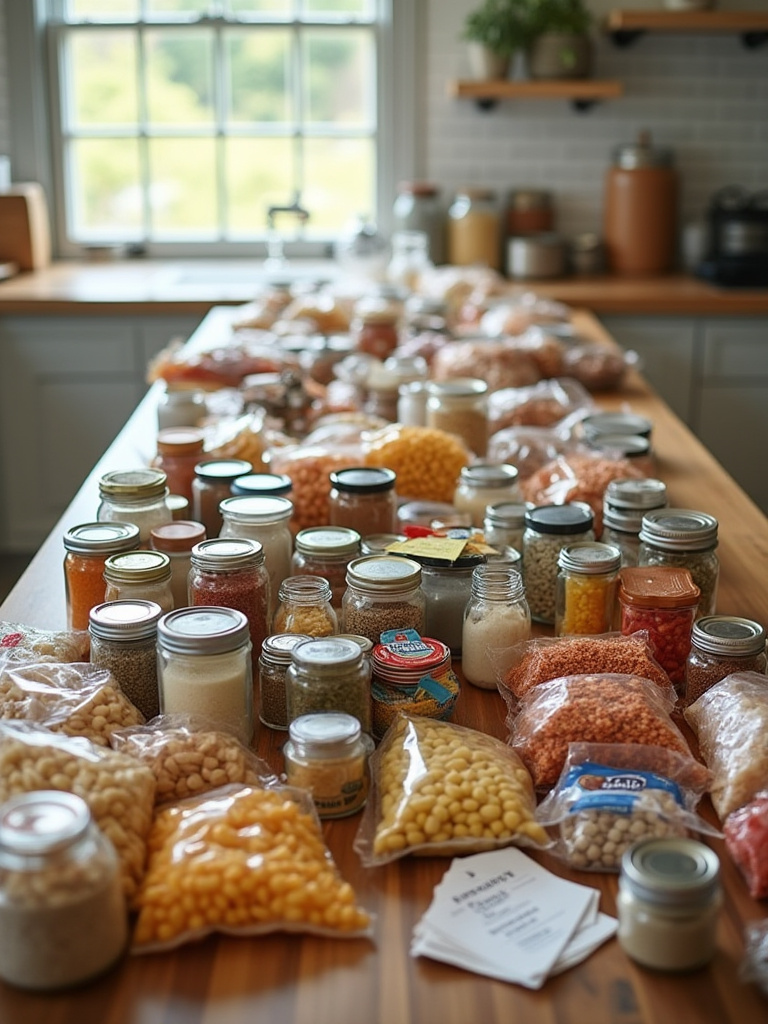
This process is a mirror reflecting your real habits, not your aspirational ones. You may realize you cook Italian food far more than you thought, or that your baking phase truly has passed. This isn’t a moment for judgment, but for information. This data is the foundation of a kitchen that works for you, not a kitchen from a magazine.
With this newfound clarity on what you have, we can start designing the layout itself, creating zones that make every action feel more natural.
3. Define Dedicated ‘Zones’ for Cooking, Prep, and Storage Efficiency
A kitchen should feel like a dance, not a marathon. When my Wai Po cooked, she could stand in one spot and pivot, reaching her cleaver, the wok, the oils, and the vegetables without taking more than a step. That is the magic of zoning. You’re creating small, self-sufficient workstations within your kitchen. Keep all your baking supplies—flour, sugar, mixing bowls, pans—together in one cabinet. Group knives, cutting boards, and mixing bowls near your largest stretch of counter space for a prep zone.
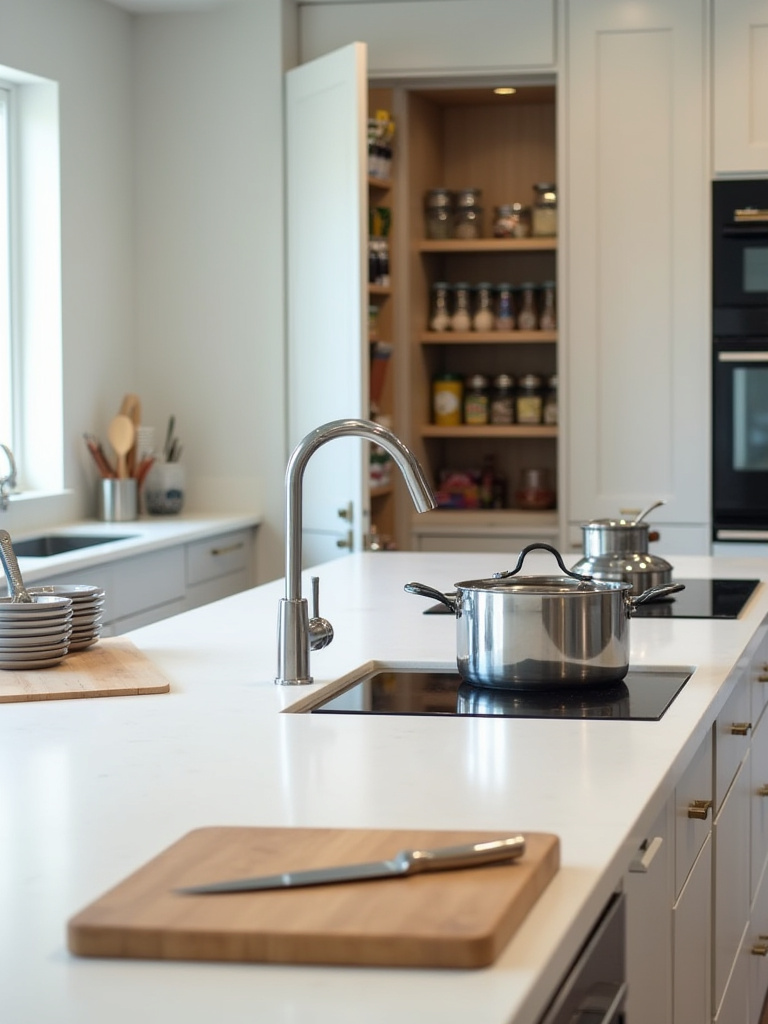
The goal is to minimize frantic running around and create a logical flow. Place your everyday dishes and glasses near the dishwasher to make unloading a simple, fluid motion. Store spices, oils, and cooking utensils next to the stove. This isn’t about rigid rules, but about observing your own movements and arranging the kitchen to support them. It’s an act of deep kindness to your future self.
As you begin to arrange these zones, you’ll naturally spot the redundant items that clutter the system. Let’s tackle that head-on.
4. Purge Duplicates and Expired Items Before Buying Any Organizers
Here’s the trap everyone falls into: they see a messy pantry and immediately rush out to buy beautiful, matching containers. It feels productive, but you’re just organizing your clutter. You’re giving your expired spices and duplicate can openers a prettier home. Please, before you spend a dime, do the purge. Consolidate half-empty bags of flour. Say goodbye to that five-year-old jar of ground cloves that has lost all its fragrance. Be honest about needing four different types of vegetable peelers.
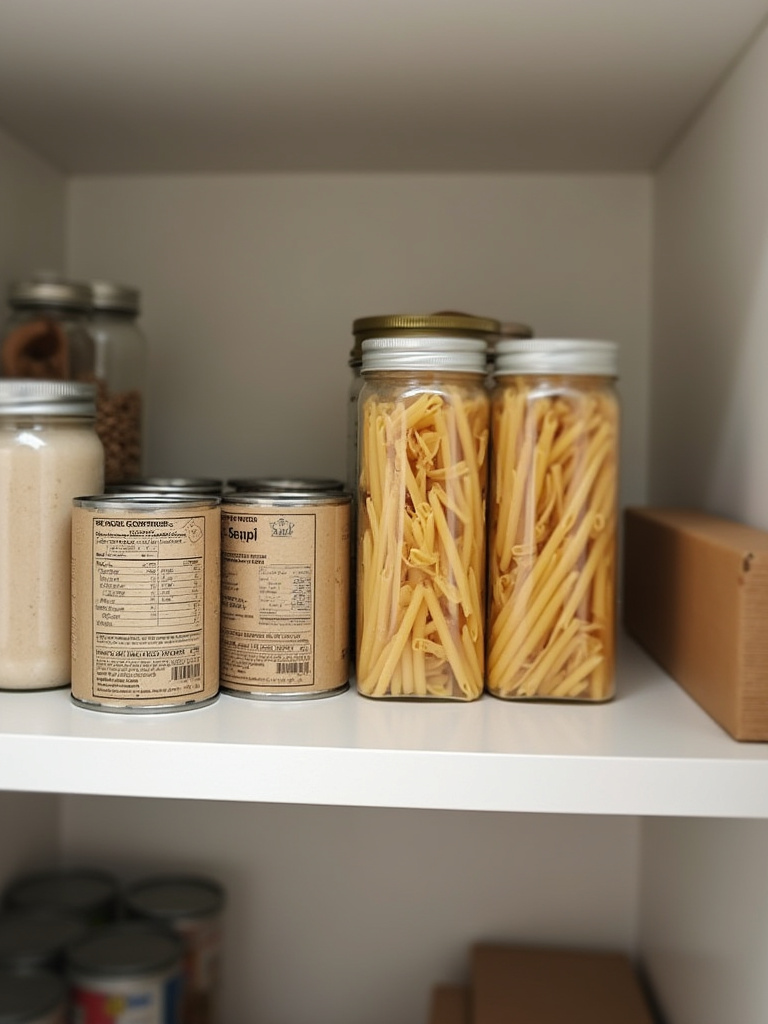
This step saves you money twice. First, you stop buying organizers for things you don’t even need. Second, you stop re-buying ingredients you already had but couldn’t find. It’s a simple, powerful act of financial and spatial discipline. Think of it as creating a clean canvas. Only then can you see what kind of “paint”—what kind of organizational tools—you truly require.
With a clean canvas, we can now look at the kitchen’s architecture and the paths we create within it.
Kickstart Your Organization with Smart Planning and Decluttering (Part 2)
We’ve cleared the clutter and know what we’re working with. Now, we refine. This part is about observing the invisible—the flow of movement, the data in our cupboards—and using that information to create a kitchen that feels effortlessly efficient.
5. Assess Traffic Flow to Avoid Organization Bottlenecks in Key Areas
Have you ever done the awkward “kitchen dance” with someone, where you’re both trying to get past each other to the fridge or the bin? That’s a sign of a traffic bottleneck. The classic “work triangle”—the path between sink, stove, and refrigerator—is a useful concept, but your personal flow is what truly matters. Notice where things get congested. Is the dishwasher door blocking the main path when it’s open? Is the trash can always in the way?
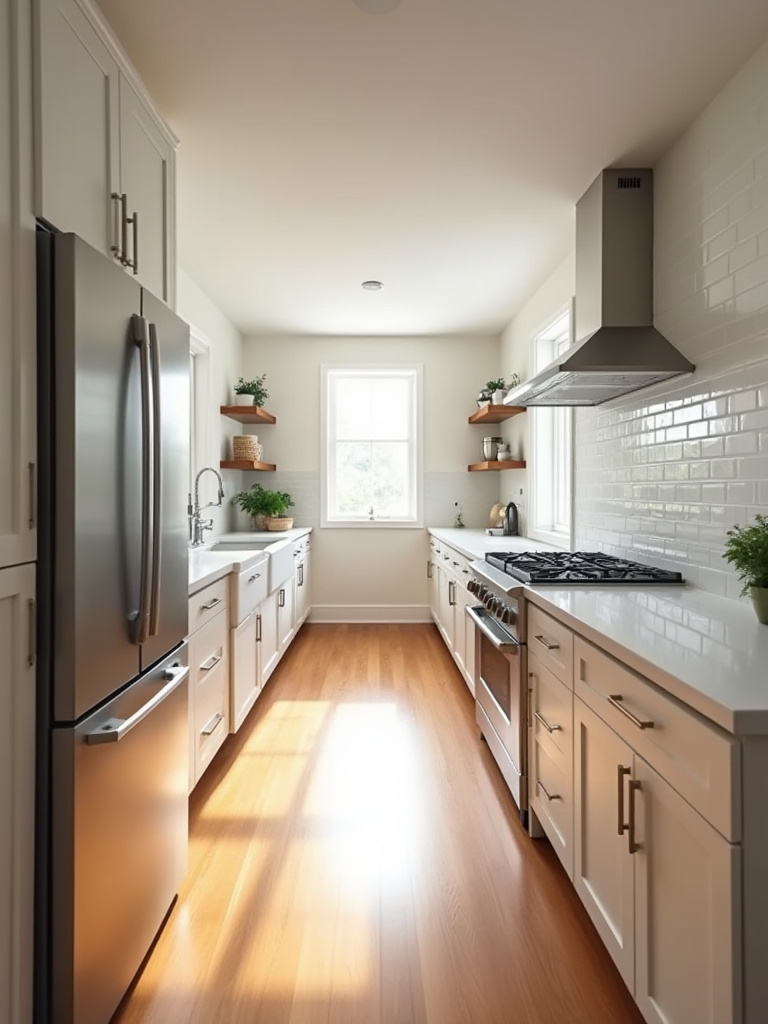
Sometimes, the smallest shift can have the biggest impact. Moving a fruit bowl, relocating the knife block, or swapping the contents of two drawers can open up a pathway and restore a sense of calm. The goal is to create unobstructed lanes for the most common tasks. A well-designed kitchen respects movement and allows for collaboration, turning a potential chaos zone into a space of easy cooperation.
Now that we are thinking about movement and data, let’s take that inventory we did and make it a dynamic, living tool.
6. Create a Digital Inventory of Pantry Staples for Smart Shopping Lists
My Polish heritage taught me the art of the well-stocked pantry, ready for unexpected guests or a long winter. My Chinese heritage taught me the importance of fresh ingredients and not over-buying. A digital inventory is the perfect fusion of these two philosophies. Using a simple spreadsheet or a notes app on your phone, you can track what you have, preventing waste and ensuring you never run out of essentials.
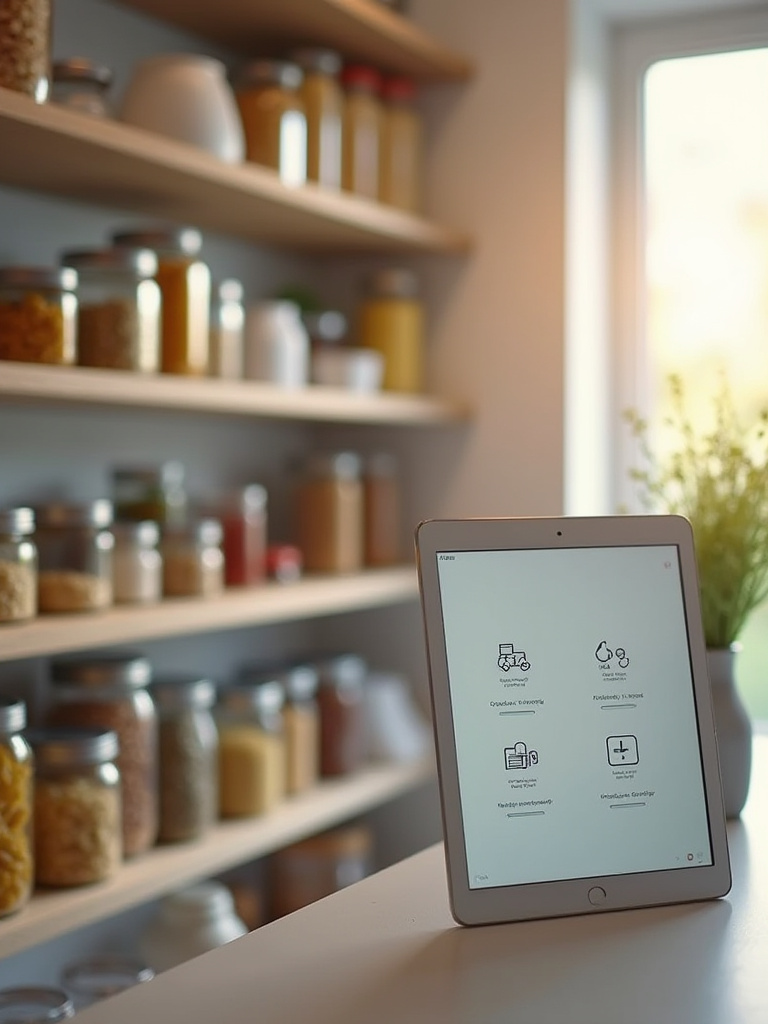
When you’re at the store, there’s no more guessing, “Do we have any more rice vinegar?” A quick glance at your list gives you the answer. This simple habit turns grocery shopping into a precise, stress-free task. It allows you to stock up on essentials when they’re on sale with confidence, while also encouraging you to use up what you have before it expires. It’s the ultimate tool for a mindful, economical kitchen.
This deep knowledge of your inventory sets the stage for implementing the actual storage systems that will house these ingredients beautifully and efficiently.
Implement Efficient Systems with Purpose-Built Storage Solutions (Part 1)
Alright, the prep work is done. We’ve decluttered, we’ve zoned, and we understand our inventory. Now we can talk about the tools. This is where we bring in smart solutions to maximize every inch of space and create systems that are not only easy to use, but a quiet joy to look at.
7. Utilize Vertical Space with Shelf Risers and Stackable Bins for Pantry Gain
In both crowded Warsaw apartments and dense Shanghai high-rises, you learn one lesson fast: look up. Vertical space is your most valuable, under-utilized asset. Tall pantry shelves are often a disaster zone, with a chaotic pile in the front and a graveyard of forgotten items in the back. Shelf risers are a game-changer. They create tiers, like stadium seating for your cans and jars, so you can see everything at a glance.
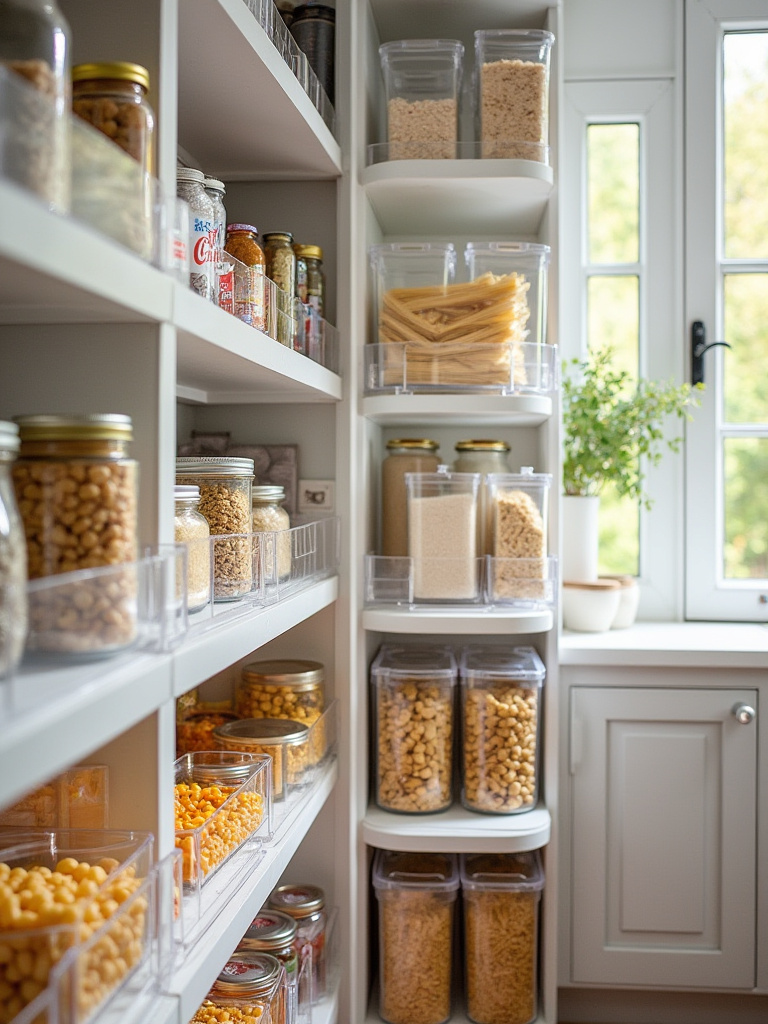
Stackable bins are perfect for grouping loose items—bags of snacks, drink pouches, baking supplies. By going vertical, you can double or even triple the usable storage on a single shelf. It’s a simple shift in perspective that transforms deep, frustrating shelves into models of clarity and accessibility. You reclaim wasted air and turn it into functional, beautiful storage.
Once you can see everything clearly on tiers, the next logical step is to make sure those items stay fresh and are easy to identify.
8. Categorize Pantry Items with Clear, Air-Tight Containers for Freshness
Decanting dry goods—flour, rice, pasta, cereal—into clear, air-tight containers is more than just an aesthetic choice. It’s a practical act of preservation. In Poland, we learned to protect flour from moisture; in humid Shanghai, it’s about keeping everything crisp and safe from pests. These containers are your best defense against both, dramatically extending the life of your food and reducing waste.
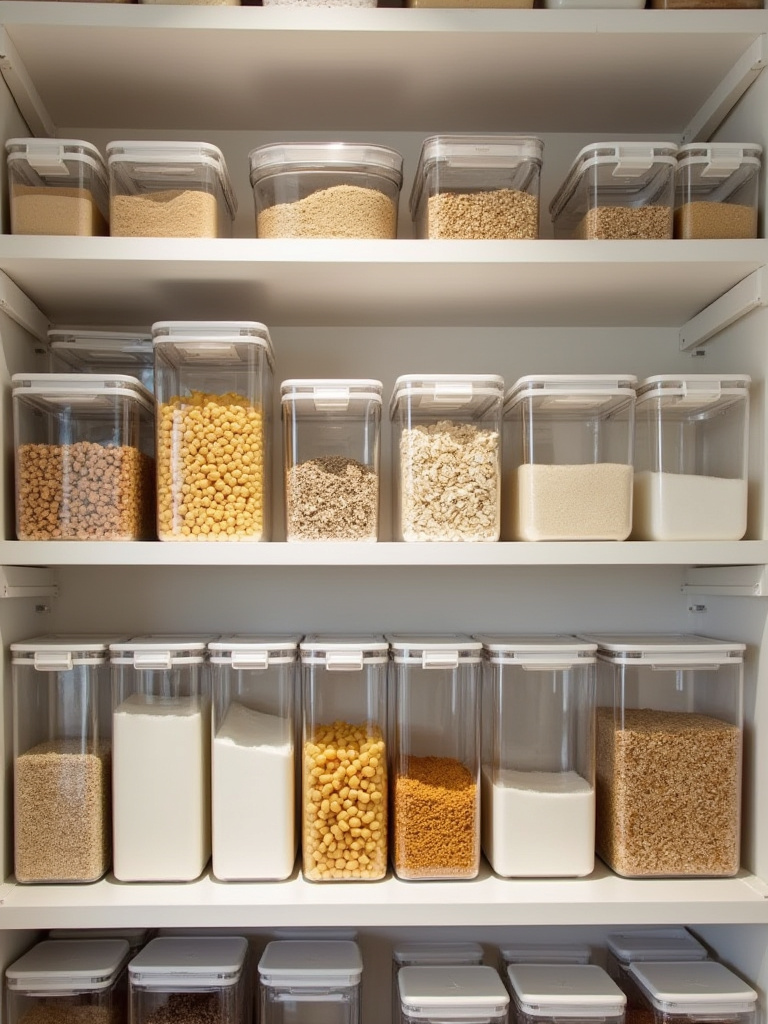
The clear nature of the containers provides instant inventory control. You see exactly how much you have left, preventing those mid-recipe emergency store runs. The uniform shapes also eliminate the awkward “Tetris” game of fitting mismatched bags and boxes onto a shelf. They bring a sense of visual calm and order that makes opening your pantry a genuinely pleasant experience.
With our pantry goods beautifully housed, it’s time to bring that same level of intention to the busiest part of the kitchen: the drawers.
9. Organize Drawers with Adjustable Dividers for Utensil and Tool Order
The sound of a utensil drawer is the sound of your kitchen’s state of mind. Is it a chaotic, clattering mess, or the quiet, satisfying thud of items nestled in their proper homes? Adjustable dividers are the secret to the latter. They allow you to create custom-sized compartments for everything, from your everyday cutlery to that oddly shaped avocado slicer.
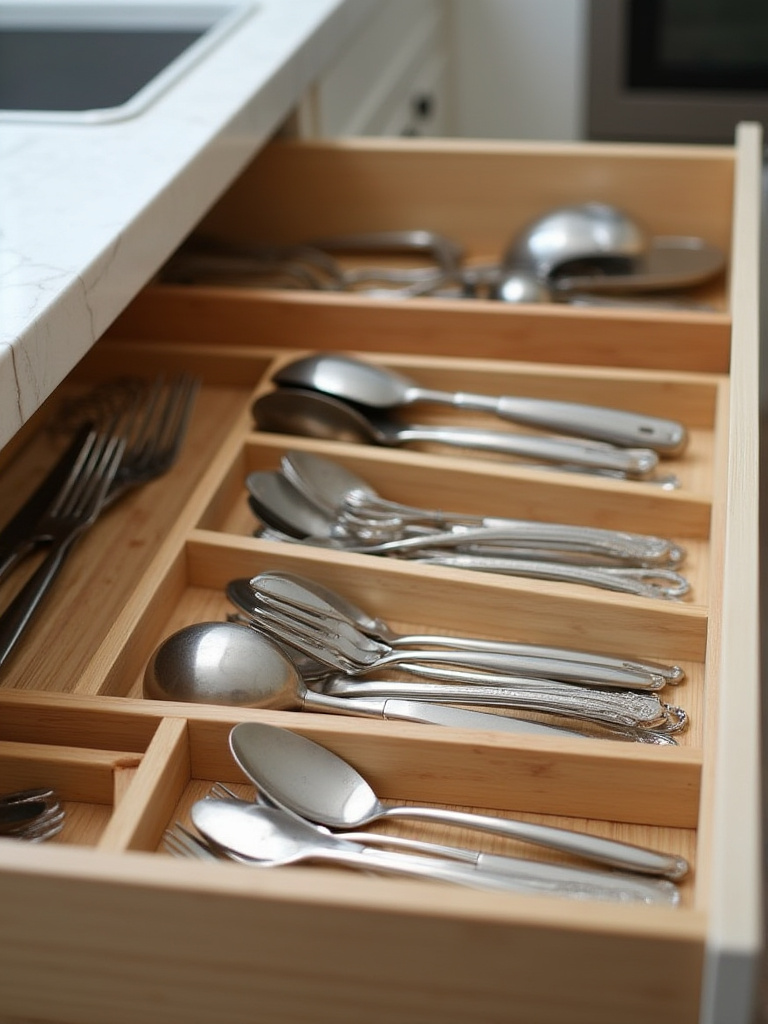
Instead of one giant “junk drawer,” you have a thoughtful system. All the spatulas live together. The whisks have their own space. This prevents tools from getting damaged, and more importantly, it saves you from that frustrating daily hunt for the can opener. It’s a small investment in time and materials that pays you back every single day with saved seconds and reduced stress.
That same principle of separation and designated homes applies just as well to our larger, clunkier cookware.
10. Hang Pot Lids and Pans to Maximize Cabinet Interiors and Prevent Stacking
The dreaded avalanche of pots, pans, and lids is a universal kitchen frustration. Stacking them is a recipe for scratched surfaces and a noisy, clumsy search for the right pan. Instead, think vertically again. Use simple hooks on the inside of cabinet doors to hang lids. A sturdy pot rack, either hanging from the ceiling or mounted on a wall, can turn your cookware into a functional piece of art.
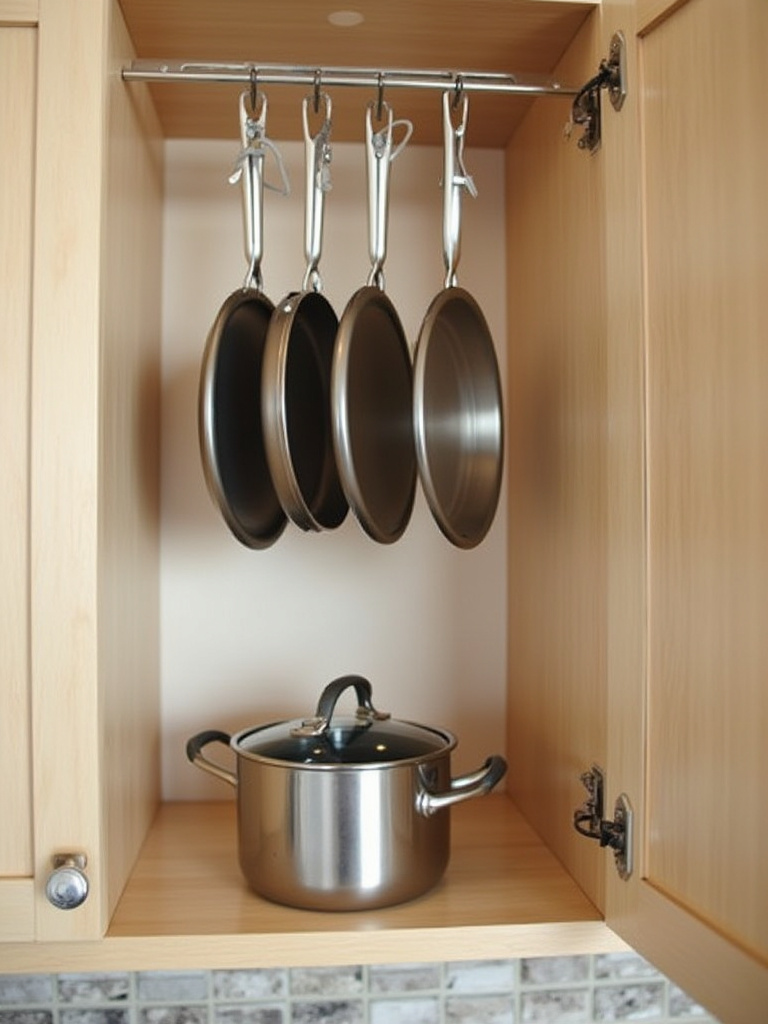
By separating these items, you give each piece room to breathe. No more lifting three heavy pans to get to the one at the bottom. This approach instantly frees up an enormous amount of shelf space for other things, like small appliances or mixing bowls. It’s about working with the shapes of your items instead of fighting against them.
Now, let’s turn our attention to one of the most notoriously difficult spots in any kitchen—the deep, dark base cabinets.
Implement Efficient Systems with Purpose-Built Storage Solutions (Part 2)
We’ve covered the basics, but true kitchen harmony is found in the details. This is where we tackle the most awkward spaces and ingrained habits, implementing clever solutions that solve those nagging, everyday frustrations once and for all.
11. Install Pull-Out Shelves for Easy Access to Deep Base Cabinets
Those deep lower cabinets are where kitchen tools go to disappear. It’s a space that requires you to get on your hands and knees with a flashlight to find anything. The solution is simple and transformative: pull-out shelves. They are, without exaggeration, one of the most life-changing upgrades you can make to a kitchen.
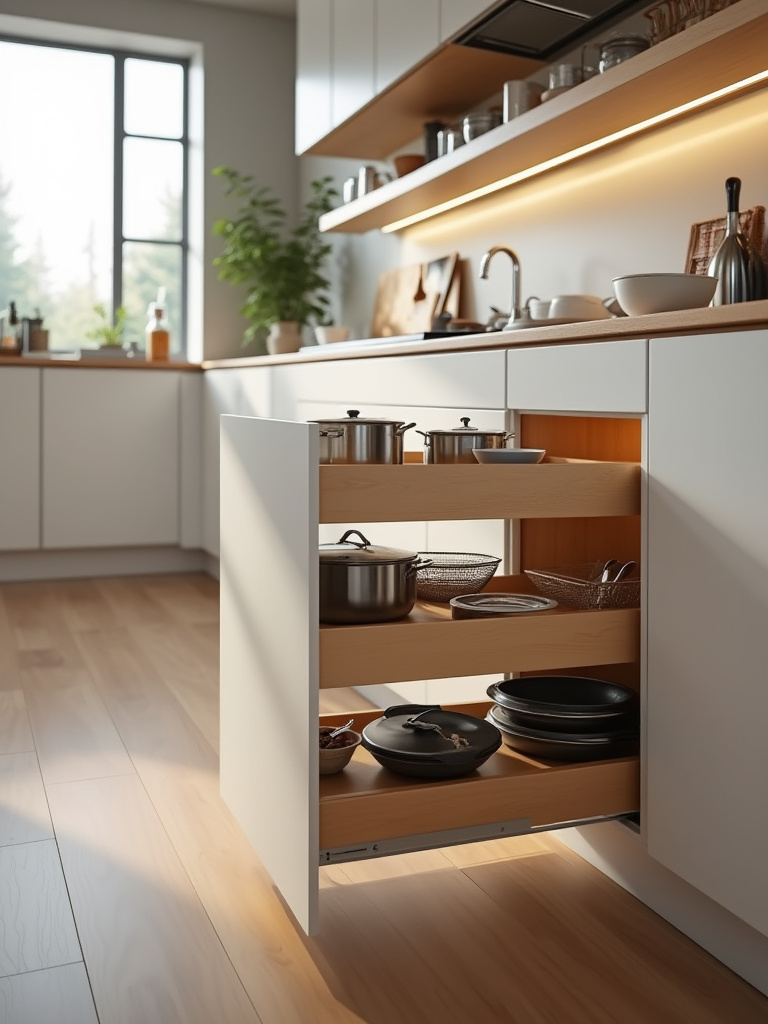
Instead of blindly reaching into a dark cavern, the entire contents of the shelf slide out into the light for you to see. This makes every item—from the heavy stand mixer to the nesting mixing bowls—completely accessible. It maximizes every inch of that deep space and saves your back in the process. This one change can make you fall in love with your kitchen all over again.
With accessibility mastered, let’s reinforce the fundamental principle that makes all these systems work.
12. Group Similar Items Together for Logical Accessibility and Retrieval
This sounds obvious, but it’s a rule that is easily broken in the rush of daily life. The principle is this: store items where you use them, with other items that share their function. Don’t keep your cooking oils in the pantry if you only ever use them at the stove. Your coffee mugs belong near the coffee maker, not across the room with the wine glasses. This is “Point-of-Use” organization.
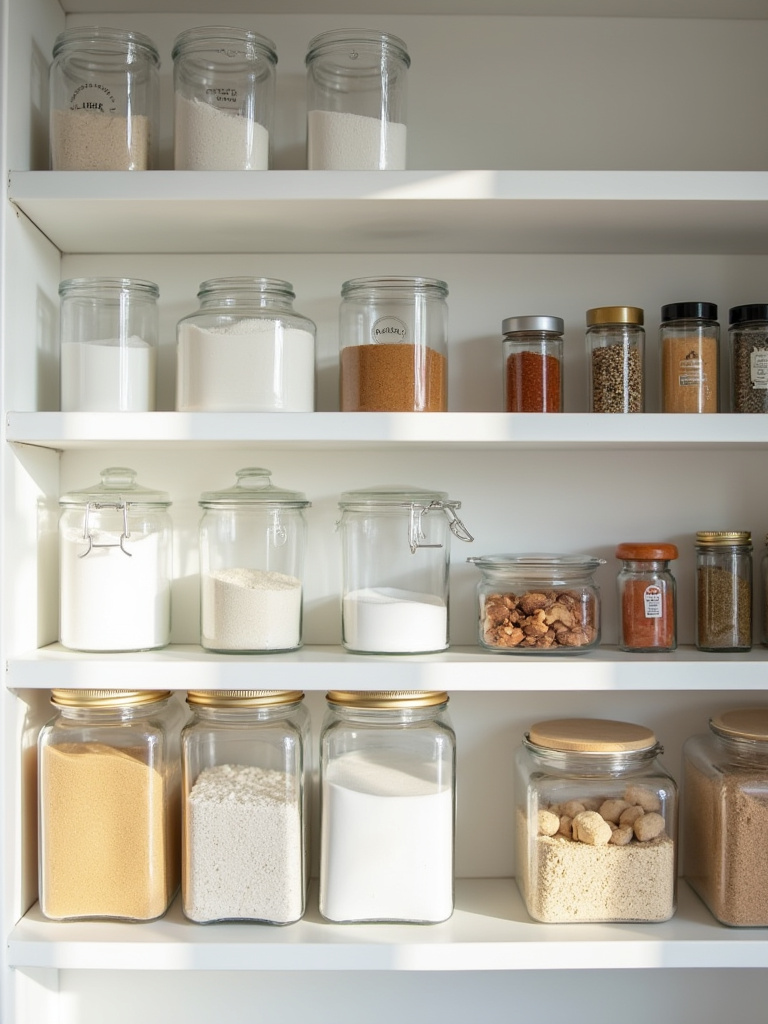
When you create these logical families of items, your body learns the map of your kitchen. Your movements become automatic and efficient. You’re not thinking, you’re just flowing. It also makes cleanup intuitive, because everything has a clear and logical home to return to. This is the bedrock of a system that lasts.
Part of this system involves not just location, but rotation—especially when it comes to things that can expire.
13. Implement a ‘First-In, First-Out’ (FIFO) System for Perishable Foods
Both my Polish and Chinese grandmothers were masters of this, though they never called it “FIFO.” It’s the simple, age-old wisdom of using up the older items before you open the new ones. When you bring home new groceries, take the extra 30 seconds to rotate the older items to the front of the fridge or pantry shelf. Place the new yogurt behind the one that’s been in there for a few days.
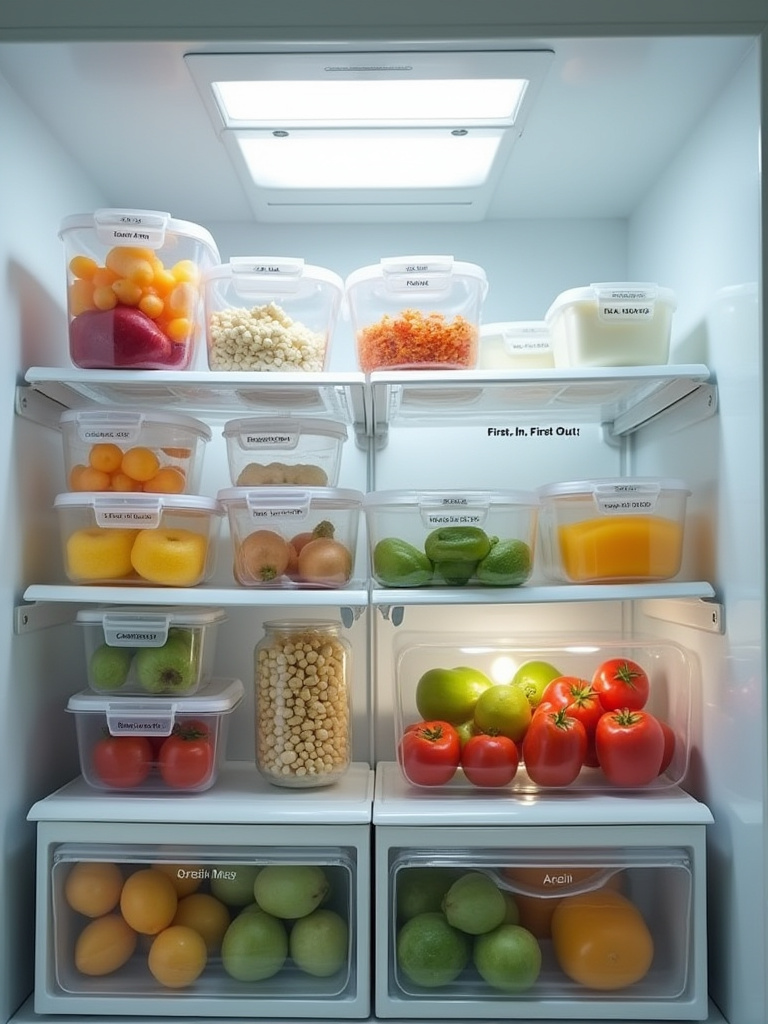
This single habit is the most powerful tool against food waste. It stops you from discovering a fuzzy block of cheese or a wilted bunch of herbs at the back of the drawer. It saves you money and shows respect for the food you’ve brought into your home. A small bin in the fridge labeled “Eat Me First” can be a fantastic visual cue for produce or leftovers that need attention.
With our systems in place, the focus now shifts to maintaining this newfound order and functionality for the long haul.
Elevate Your Kitchen’s Functionality and Maintain Lasting Order (Part 1)
An organized kitchen isn’t a finished project; it’s a living system that needs gentle, consistent care. These next few tips are about creating the small habits and visual cues that make maintenance feel effortless, ensuring your space stays serene and functional every single day.
14. Label Everything Clearly with Attractive and Durable Tags for Quick ID
You’ve done the hard work of decanting and organizing, now give yourself the gift of clarity. Labels are the road signs for your kitchen. They eliminate guesswork for everyone in the family and make it a thousand times more likely that things will be put back in the right place. You don’t have to guess if it’s baking soda or baking powder—the label tells you.
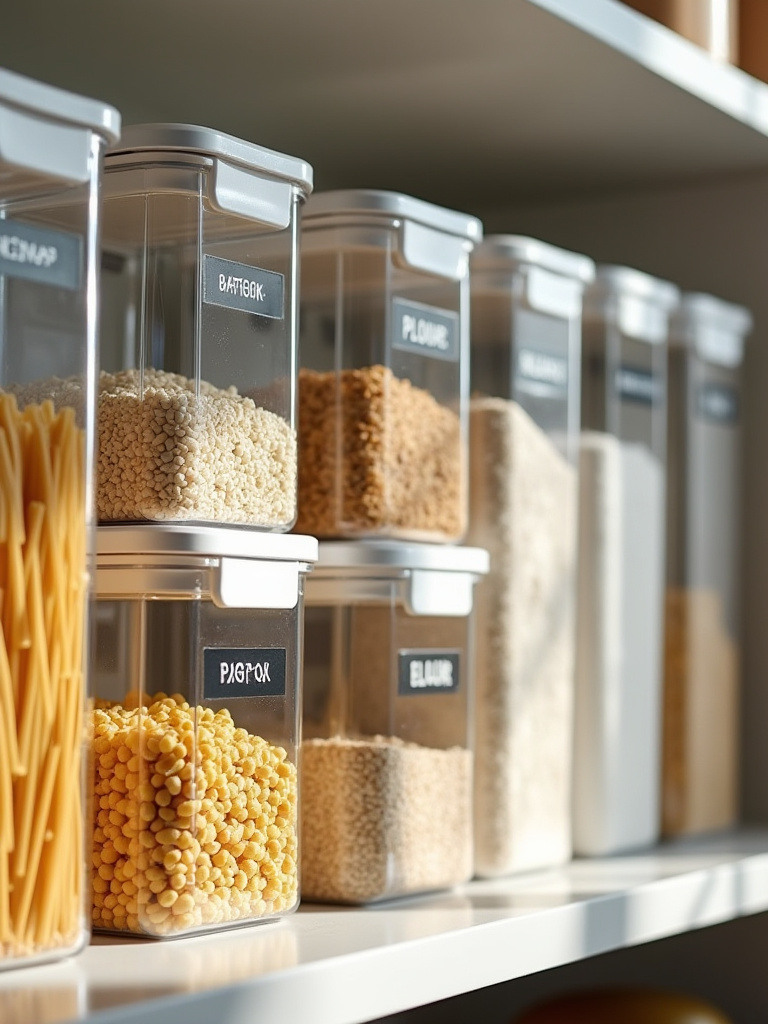
You can use a simple label maker for a clean, uniform look, or elegant chalkboard labels for things that change often. Whatever your style, make them clear and consistent. This small detail elevates your system from a personal project to a functional, shareable household resource. It’s a gesture of hospitality to your own family.
Just as you need a clear home for your ingredients, you need one for the items that flow in and out of your house daily.
15. Design a Dedicated ‘Drop Zone’ for Keys, Mail, and Everyday Essentials
The kitchen counter is often the default dumping ground for everything we carry into the house: mail, keys, sunglasses, wallets. This creates instant visual clutter and stress. The solution is to create a designated “drop zone.” It can be a small tray on a counter by the door, a wall-mounted organizer, or a small bowl on an entryway table.
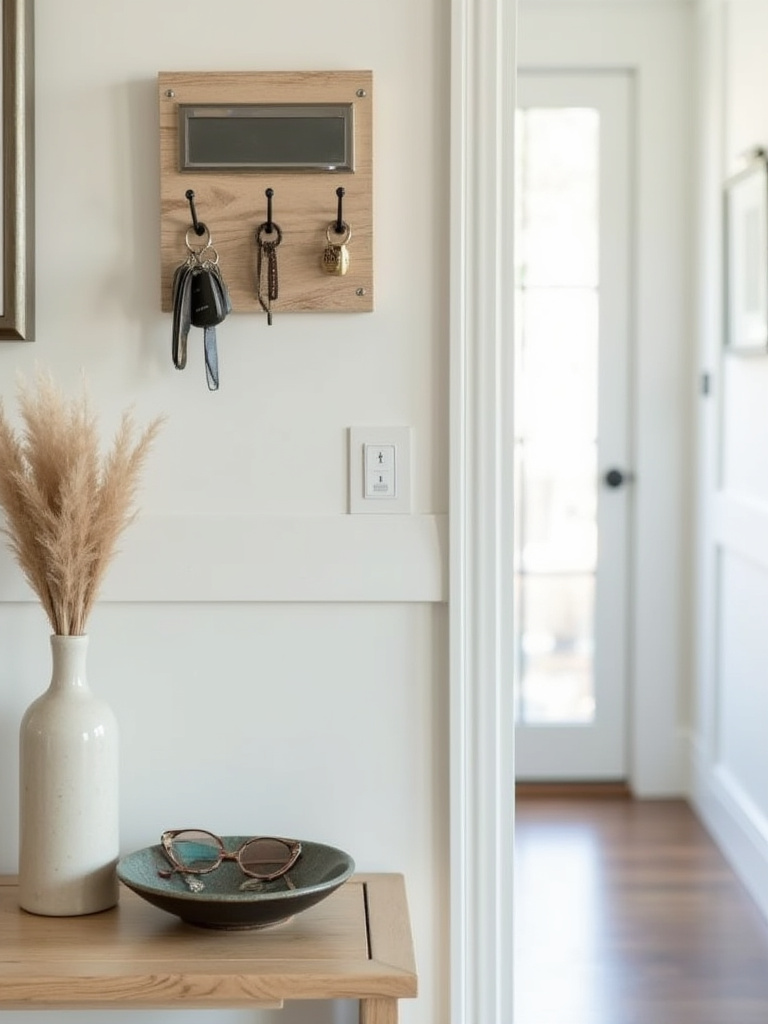
This is the designated home for transient items. By training yourself and your family to use this spot consistently, you protect your precious counter space from clutter. It takes two seconds upon entering your home but saves you the constant effort of clearing surfaces. It’s a boundary that helps keep your culinary sanctuary serene.
By establishing boundaries for clutter, we also need to be intentional about what gets to live on our counters full-time.
16. Streamline Countertops by Storing Infrequently Used Appliances in Cabinets
Your countertop is your most valuable real estate. It’s your workshop. Every item that lives there permanently should earn its spot by being used daily. Your coffee maker? Yes. Your toaster? Probably. But the heavy-duty stand mixer you use once a month, the waffle iron for weekend treats, the blender you use for occasional smoothies? They can live in a cabinet.
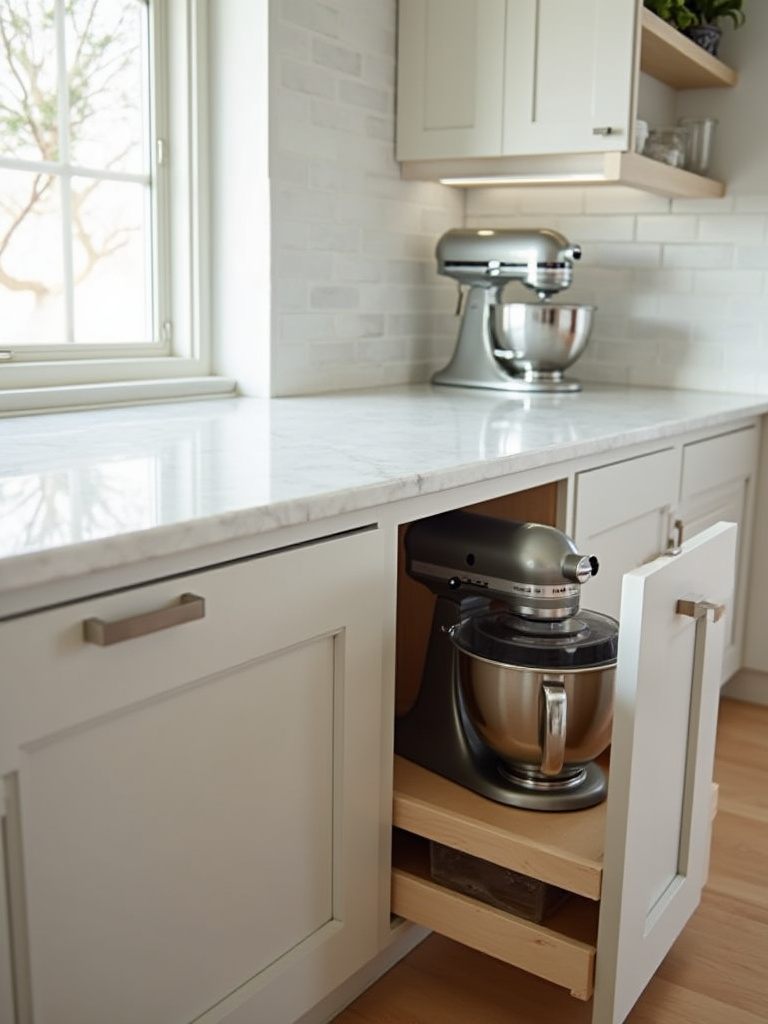
Reclaiming your countertop from appliance clutter is visually liberating. It makes the whole kitchen feel larger, calmer, and easier to clean. It gives you the physical and mental space to spread out when you cook. Be honest about an appliance’s true frequency of use and give yourself the gift of clear, open workspace.
That philosophy of reclaiming hidden space applies equally well to the most awkward cabinet in the whole kitchen.
17. Master Under-Sink Organization for Cleaning Supplies with Tiered Solutions
The cabinet under the sink is a challenge in every home, with its awkward pipes and deep, dark corners. Don’t surrender it to chaos. This is the perfect place for tiered shelves, stackable bins, or a lazy Susan. These tools allow you to use the vertical space around the plumbing and make everything visible and reachable.
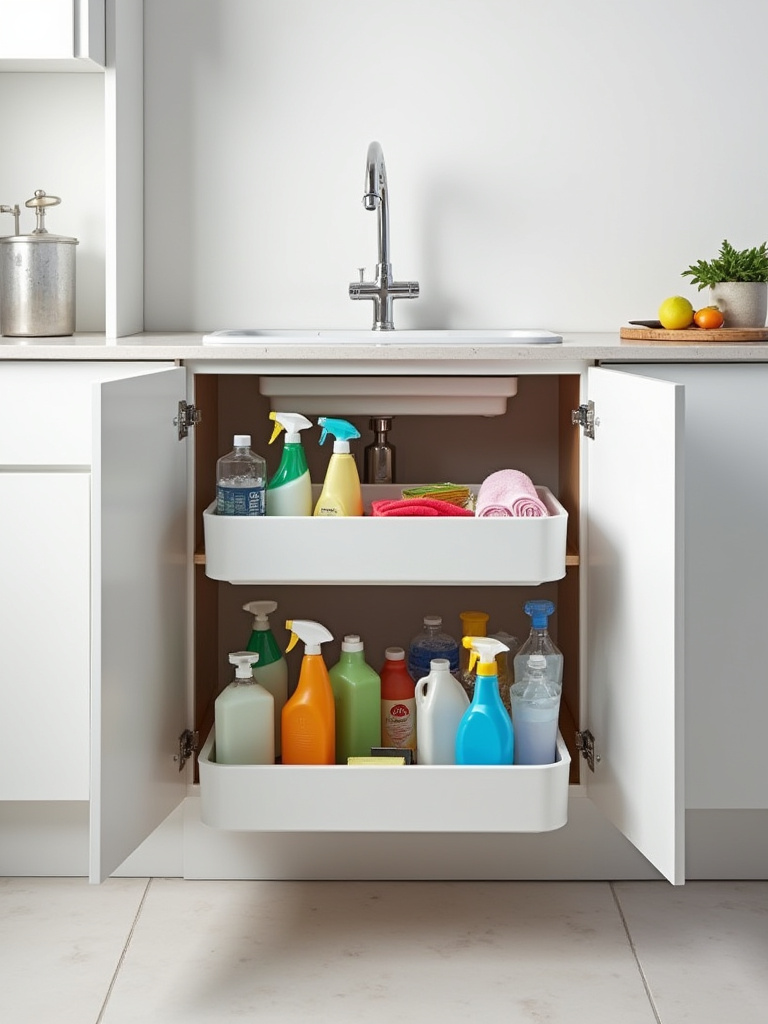
A simple tension rod installed near the top can be used to hang spray bottles by their triggers, freeing up the entire floor of the cabinet for other supplies. By taming this notoriously difficult space, you create a functional and tidy command center for all your cleaning needs, removing them from sight and keeping them neatly organized.
We are almost there. We have the systems, we have the habits. Now, how do we make it all last?
Elevate Your Kitchen’s Functionality and Maintain Lasting Order (Part 2)
A garden, no matter how beautifully planted, requires tending. The same is true for your kitchen. The final and most crucial step is to build in the gentle, recurring rituals that will maintain the harmony you’ve worked so hard to create.
18. Establish a Weekly 15-Minute ‘Kitchen Reset’ Routine for Continued Tidiness
Perfection isn’t the goal; consistency is. Don’t wait for the kitchen to descend into chaos before you tackle it. Instead, schedule a 15-minute “reset” once a week. Put on some music, set a timer, and move quickly. The goal isn’t deep cleaning. It’s a quick tidy-up: put away stray items, wipe down the counters and stovetop, sort the mail, and clear any clutter that has accumulated.
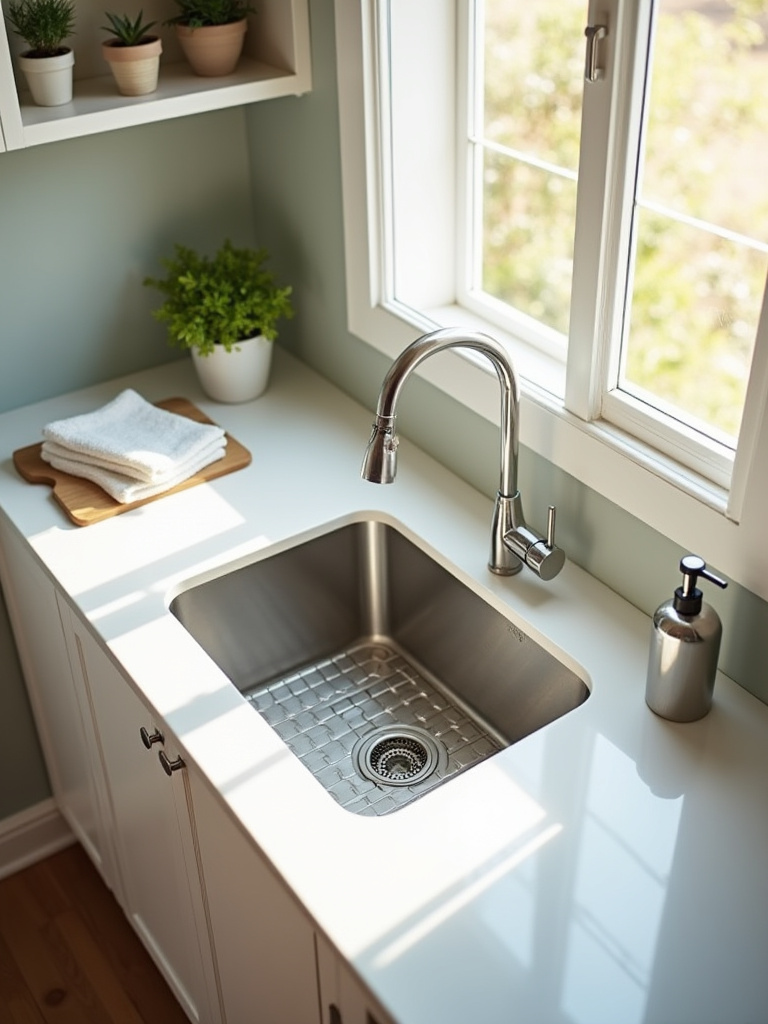
This short, focused burst of activity is a powerful preventative measure. It stops small messes from becoming overwhelming projects and keeps your kitchen in a constant state of readiness. It’s a small weekly investment that pays huge dividends in daily calm. You’ll be amazed at what you can accomplish in just 15 minutes.
This weekly ritual keeps things in check, but a seasonal refresh is also essential for long-term balance.
19. Conduct a Bi-Annual Deep Decluttering Session to Prevent Accumulation
Even with the best systems, things accumulate. We try new recipes, receive gifts, and our needs change. Twice a year, it’s wise to do a deeper dive. Go through your pantry and spice rack, checking for expired dates. Re-evaluate the tools in your drawers—are you still using everything? Assess your zones—do they still make sense for the way you’re cooking now?
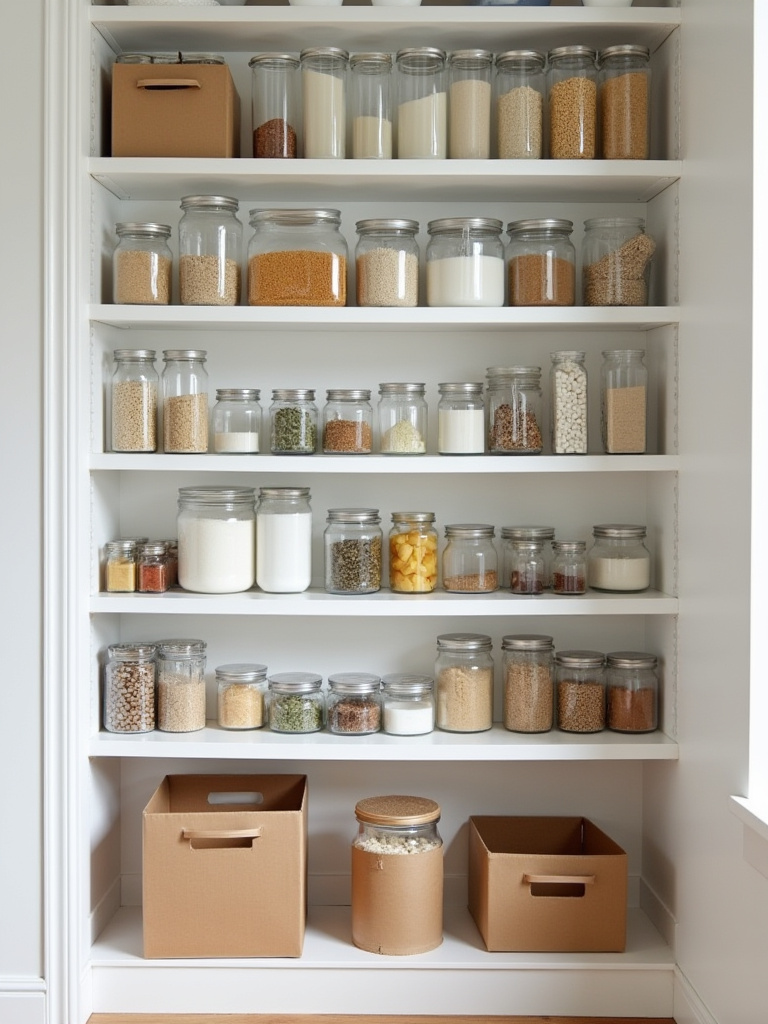
Think of this as a gentle edit, a seasonal recalibration of your space. It’s an opportunity to fine-tune your systems and ensure your kitchen continues to evolve with you and your family. It’s not about starting over; it’s about making sure the beautiful, functional system you’ve built continues to serve you perfectly.
Conclusion
Your kitchen is so much more than a utility room. It’s where you blend the recipes of your past with the flavors of your present. It’s where you nourish your family and connect with friends. Creating an organized kitchen isn’t about achieving a sterile, perfect space, but about designing a harmonious one that tells your unique story.
By thoughtfully clearing out what no longer serves you and creating intuitive systems for what remains, you transform your kitchen into a place of calm, creativity, and connection. Start with just one tip—the one that speaks to you most. Clear one shelf. Define one zone. The journey to a kitchen you love begins with a single, intentional step. Let that step be a celebration of your heritage, your life, and the beautiful meals you have yet to create.
